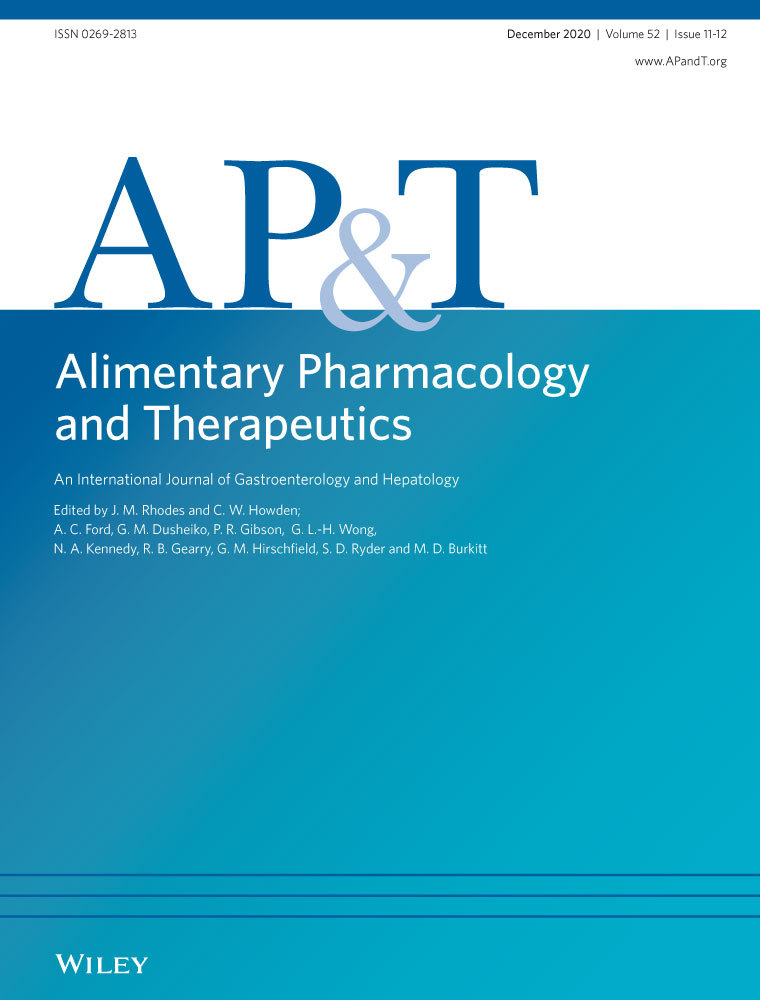Letter: elevated aspartate aminotransferase and aspartate aminotransferase to alanine aminotransferase ratio predicts poor survival in hepatocellular carcinoma after resection
Abstract
LINKED CONTENT
This article is linked to Kao et al and Wong & Kao papers. To view these articles, visit https://doi.org/10.1111/apt.16097 and https://doi.org/10.1111/apt.16138
The recent East Asia Consensus1 and official guideline2 on treatment initiation for chronic hepatitis B recommend that indications for anti-viral therapies are mainly related to four factors, namely hepatitis B virus (HBV) deoxyribonucleic acid (DNA), alanine aminotransferase (ALT), cirrhosis, and family history of hepatocellular carcinoma (HCC). Aspartate aminotransferase (AST) is not considered a necessary factor in treatment decision.
Serum AST to ALT level is commonly interpreted for aetiologies of hepatocyte damage. Patients with cirrhosis or alcohol-related liver disease are more likely to have an elevated AST/ALT ratio.3 Moreover, elevated AST/ALT ratio is an independent risk factor of mortality in patients with HCC.4, 5
We have retrospectively analysed our data on ALT, AST and AST/ALT ratio among patients with HCC after hepatectomy at a single hepatobiliary surgery centre. Data were collected from 921 consecutive patients with primary HCC between 1 January 2016 and 31 December 2018.6 About 90% were hepatitis B surface antigen-positive. Overall survival was compared between patients with pre-operative normal or elevated ALT , normal or elevated AST, and AST/ALT ≤2 or >2. The Kaplan-Meier method was used to approximate the overall survival, and the significance of survival difference between groups was determined using the log-rank test.
Among 921 patients with available AST and ALT levels at the time of first presentation with HCC before hepatectomy, 114 (12.4%) had AST/ALT ratios >2. This is in contrast to the reported 28.7% by Chen and coworkers from Taiwan,4 or 25% by von Felden and coworkers from Germany,5 presumably because their data included patients with advanced stage HCC or patients who received palliative therapies. However, our results that patients with AST/ALT ratios >2 had significantly lower overall survival than those with AST/ALT ratios ≤2 (Figure 1A) were consistent with the findings from the previous two studies.4, 5 Anecdotally, we observed that unusually elevated AST was also associated with significantly lower overall survival than normal AST (Figure 1B). However, patients with elevated ALT had similar overall survival than those with normal ALT (Figure 1C).

Previous studies found that elevated ALT was strongly associated with the incidence of HCC regardless of HBV,7 the metabolic syndrome,8 risk of mortality from liver diseases9 and even intracerebral haemorrhage.10 However, our pilot study did not find an overall survival difference between patients with normal or elevated ALT levels. We plan to explore their associations with large sample cohorts with longer follow-up to verify the findings of this preliminary study.
ACKNOWLEDGEMENT
Declaration of personal interests: None.
Funding: This work was partly supported by the Graduate Course Construction Project of Guangxi Medical University (YJSA2017014). The funding source had no role in the design or conduct of the study; in the collection, analysis or interpretation of the data; or in the preparation, review or approval of the manuscript.




